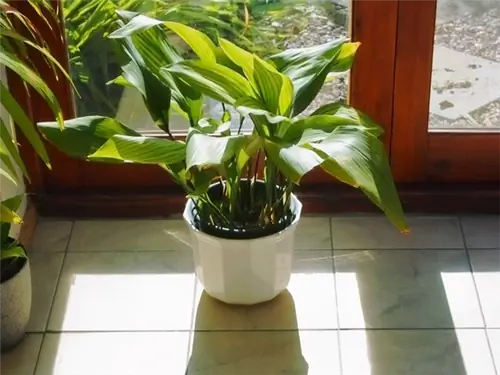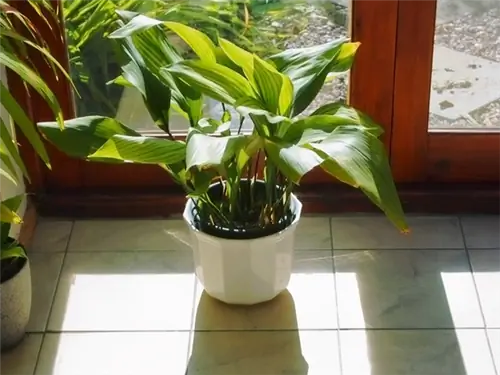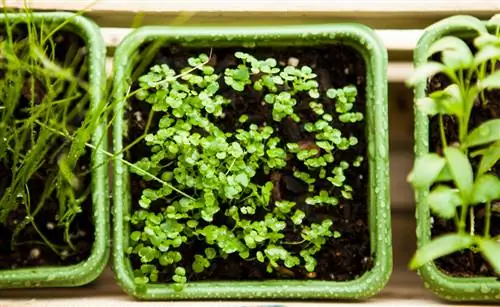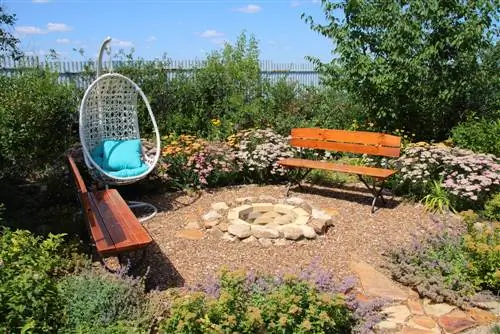- Author admin [email protected].
- Public 2023-12-25 17:45.
- Last modified 2025-01-23 11:21.
The cobbler palm impresses as an opulent foliage plant for indoor cultivation. Thanks to its undemanding frugality, the Asian, stemless asparagus plant forgives many a beginner's mistake. However, this doesn't have to happen. If you delve into the following answers to frequently asked questions, cultivation will be easy for you.

How do you properly care for a cobbler palm?
The cobbler palm is an undemanding houseplant that prefers semi-shady places. Your care includes moderate watering with soft water, fertilizing fortnightly from April to October, removing wilted leaves and occasional repotting in acidic substrate.
Care tips
Like hardly any other houseplant, the cobbler palm forgives the odd beginner's mistake. The foliage plant is nevertheless grateful for the following care program:
- Watering moderately with soft water
- Fertilize liquidly every 14 days from April to October
- Cut completely wilted leaves down to 3 cm
- Repot a maximum of every 4-5 years in early spring
If the butcher palm lingers in a partially shaded location on the airy balcony, put the plant away before the first frost. From November to March, the houseplant rests at a cool 8-10 degrees Celsius and reduced water supply. There is no fertilization in this phase.read more
Which location is suitable?
The houseplant owes its names, cobbler's palm and butcher's palm, to the fact that in the past it thrived even in the dimly lit shoemaker's workshop or on the dimly lit counter of the butcher's shop. The Asian beauty stands out in all conceivable light and temperature conditions. The decorative leaves could only suffer sunburn under direct sunlight. The plant loves to live in a partially shaded, warm place on the summer balcony. She prefers to spend her well-deserved winter rest on the cool window sill on the north window of the house at 10-12 degrees Celsius.
What soil does the plant need?
The quality of the soil primarily contributes to he althy growth. As a substrate, choose a good compost-based potting soil or a special palm soil with a pH value of 5.5 to 6.5. This value can be found on the packaging. To provide a cobbler palm with premium conditions, mix the potting soil yourself. The following recipe is based on many years of experience:
- 4 parts standard soil (TKS1) or normal potting soil
- 2 parts clayey soil
- 1 part quartz sand
- 1-2 parts lava granules or expanded clay
Check the mixture's pH value with a test strip. If the result is above 6.5, add leaf mold or peat to lower the pH.
Cut cobbler palm correctly
Although the cobbler palm does not develop a trunk, it still has the growth typical of palm trees. This means that the only point of vegetation is at the top of the plant. If you attack your green darling with the scissors, he will stop growing indignantly. How to properly prune a butcher palm:
- Never cut the top of a cobbler palm
- Do not remove brown leaves until they have completely withered
- Use a knife or scissors to cut off the petiole down to 3 cm
Before using the cutting tool, it should be disinfected with high-percentage alcohol. Any cut opens the door to cunning viruses, fungal spores and pests to get inside the plant.
Watering the cobbler palm
Water the cobbler palm very sparingly all year round. Watering is only carried out when the top two thirds of the substrate have dried. Only use stale tap water or collected rainwater to ensure that the pH value in the substrate does not rise. After 20-30 minutes, please check the coaster to pour out the excess water.
Fertilize cobbler palm properly
The 14-day rhythm has proven to be excellent in supplying butcher palms with nutrients during the growing season. Apply a commercially available palm fertilizer in liquid form from April to October. Please note that liquid fertilizer should not be applied to dry substrate. First moisten the soil with clear water and then add the fertilizer to the irrigation water. Stop adding fertilizer from November to February.
Wintering
The cobbler palm is not frost hardy. Clear the plant in good time in the fall so that it can spend its winter period dormant. A partially shaded window seat at a cool 8-10 degrees Celsius is ideal. An unheated stairwell, a cool winter garden or a frost-free garage also come into consideration. Water moderately to prevent the root ball from drying out. Stop fertilizing from November to March.
Propagate cobbler palm
You can propagate the robust cobbler palm in early spring by dividing the rhizomes. Cut off root strands with at least 2 leaves. Plant these individually or in small groups in lean, well-drained and slightly acidic substrate. In the partially shaded window seat, you can care for your pupils like adult plants. The only thing that is avoided is the administration of fertilizer, which impairs rooting in this phase. Once the young plants have completely rooted through their cultivation container, repot them in palm soil and start the normal care program.
How do I transplant correctly?
Replant a cobbler palm only every 4-5 years in spring, as the houseplant likes to remain undisturbed. Use a spacious container for the powerful root ball. A few pieces of pottery above the water drain effectively prevent harmful waterlogging. Add palm soil or your own personal mixture to a third of the height of the pot. Use your fist to make a depression in the earth. Then pot up the butcher palm and shake off the leached soil. The planting depth should be maintained as precisely as possible. Finally, water the ornamental leaf plant with soft water.
Is cobbler palm poisonous?
The cobbler palm is almost certainly not poisonous. In the absence of scientific evidence and well-founded information in the literature, we still recommend wearing gloves if you have a history of allergies.read more
Brown leaves
Brown leaves are an unmistakable symptom of waterlogging. Too frequent and intensive watering results in this classic damage to cobbler palms. Repot the affected plant into fresh, dry substrate. In the future, only apply soft water to the root ball when the soil is two-thirds dry.
Yellow leaves
With yellow leaves, the cobbler palm signals a nutrient deficiency due to an excess of lime. In order for the roots to access the nutrition in the substrate, a slightly acidic pH value is of fundamental importance. If hard tap water is poured, the lime in it deposits the vital iron. The result is leaf chlorosis with yellowed leaves. Therefore, only water with soft, room temperature water.






